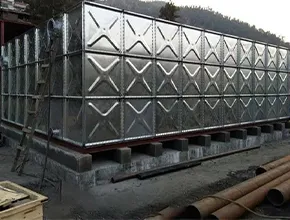loading...
- No. 9, Xingyuan South Street, Dongwaihuan Road, Zaoqiang County, Hengshui, Hebei, China
- admin@zjcomposites.com
- +86 15097380338
- Welcome to visit our website!
frp decking
The Advantages of FRP Decking A Modern Solution for Construction
In recent years, the construction industry has seen the emergence of innovative materials that enhance the functionality and longevity of building projects. One such material is Fiber Reinforced Polymer (FRP) decking. Known for its unique properties and benefits, FRP decking has become increasingly popular in various applications, from bridges and walkways to industrial flooring and marine structures. This article will explore the advantages of FRP decking and its potential to revolutionize the construction landscape.
What is FRP Decking?
FRP decking is a composite material created by combining a polymer matrix with reinforcing fibers, typically glass or carbon fibers. This combination results in a material that is lightweight yet exceptionally strong, resistant to corrosion, and capable of withstanding a range of environmental conditions. These characteristics make FRP decking an ideal choice for projects where traditional materials like steel and concrete might fall short.
Lightweight and Strong
One of the most significant advantages of FRP decking is its lightweight nature. Compared to traditional materials, FRP is considerably lighter, which can dramatically reduce the overall load on structural elements. This lightweight quality not only simplifies transportation and installation but also allows for the use of smaller structural supports, resulting in cost savings and reduced material requirements.
Despite its light weight, FRP decking boasts remarkable strength. Its tensile strength often exceeds that of steel, making it a robust choice for various applications. This combination of being lightweight yet strong translates into enhanced performance and durability over time.
Corrosion Resistance
Another compelling benefit of FRP decking is its exceptional resistance to corrosion. Unlike steel, which can rust and degrade over time when exposed to moisture and chemicals, FRP remains unaffected by such environmental factors. This is particularly advantageous in harsh settings, such as chemical plants, wastewater treatment facilities, or coastal areas where salt exposure is prevalent. The longevity of FRP decking minimizes maintenance needs and replacement costs, making it a cost-effective solution in the long run.
frp decking

Customization and Design Flexibility
FRP decking can be manufactured in a variety of colors, designs, and textures, providing architects and designers with the flexibility to create visually appealing projects. Whether it's for a modern pedestrian bridge, a scenic boardwalk, or an industrial platform, FRP can be customized to meet aesthetic and functional requirements. Its versatility allows for creative solutions that blend seamlessly with their surroundings while offering practical benefits.
Environmental Considerations
Sustainability is a growing concern in construction, and FRP decking aligns with this valuable trend. The use of FRP can contribute to greener building practices since it is often made from recycled materials. Additionally, its durability ensures that replacements and repairs are infrequent, leading to reduced waste. By opting for FRP decking, project managers can take a step towards minimizing their environmental impact while still achieving high-performance outcomes.
Applications of FRP Decking
The applications of FRP decking are diverse and widespread. In infrastructure, it is commonly used for pedestrian walkways, bridges, and platforms due to its strength and lightweight properties. In industrial settings, FRP decking serves as flooring in chemical plants and storage facilities, where resistance to abrasions and spills is crucial. Additionally, its waterproof characteristics make it ideal for marine structures such as docks and piers.
Conclusion
FRP decking is more than just an alternative to traditional materials; it is a modern solution that brings multiple benefits to the construction industry. Its lightweight yet strong composition, resistance to corrosion, design flexibility, and environmentally friendly attributes make it an excellent choice for a variety of applications. As the industry continues to evolve, incorporating innovative materials like FRP decking will undoubtedly play a key role in creating sustainable and efficient construction practices for the future. Embracing FRP technology can lead to safer, more durable structures that meet the demands of both today and tomorrow.
-
The Rise of FRP Profiles: Strong, Lightweight, and Built to LastNewsJul.14,2025
-
SMC Panel Tanks: A Modern Water Storage Solution for All EnvironmentsNewsJul.14,2025
-
GRP Grating: A Modern Solution for Safe and Durable Access SystemsNewsJul.14,2025
-
Galvanized Steel Water Tanks: Durable, Reliable, and Ready for UseNewsJul.14,2025
-
FRP Mini Mesh Grating: The Safer, Smarter Flooring SolutionNewsJul.14,2025
-
Exploring FRP Vessels: Durable Solutions for Modern Fluid HandlingNewsJul.14,2025
-
GRP Structures: The Future of Lightweight, High-Performance EngineeringNewsJun.20,2025
